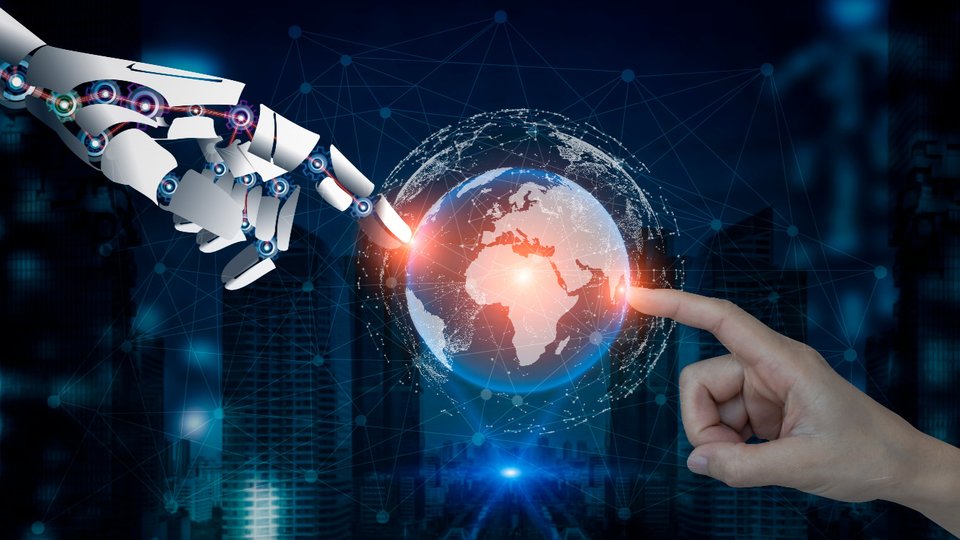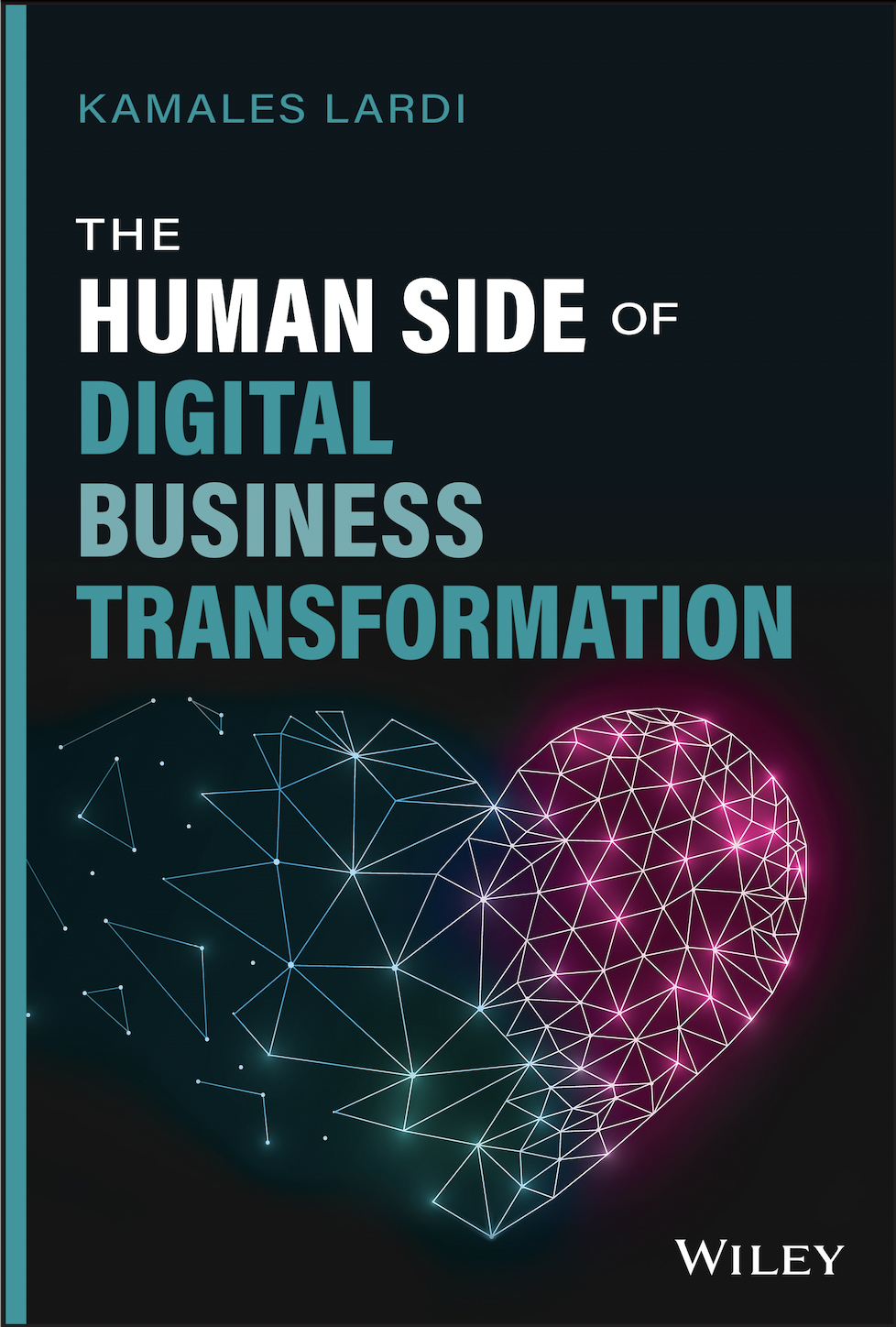Content
Book review: 'The human side of digital transformation' by Kamales Lardi
Kamales Lardi's book, "The Human Side of Digital Business Transformation", leverages decades of business and consulting experience in this human-centered roadmap to successful digital transformation. A thorough, practical and ultimately optimistic manual for success in the Fourth Industrial Revolution.

February 3, 2023
 |
Image provided by Smith Publicity. |
"Business as usual is no longer valid," Kamales Lardi writes at the start of The Human Side of Digital Business Transformation, a book that leverages decades of business and consulting experience to craft a human-centered roadmap to successful digital transformation. Practically bursting with comprehensive research and interviews with global business figures, this is a wide-ranging, eminently readable volume that engages the heart and mind with a thorough, practical and ultimately optimistic manual for success in the Fourth Industrial Revolution.
It would honestly be intimidating in its intellectual weight if the writing wasn't so engaging. Vividly illustrated with historical and current examples, Lardi brings real-world strategies for success, which she shares with an easy, conversational style that sucks you into the pages and simply won't let you go. This is essential reading, especially for anyone involved in digital marketing and customer engagement.
 |
Image provided by Smith Publicity. |
Putting people first
"Digital business transformation is a fundamental change of an organization's culture, operations and ecosystem by leveraging technology to create value," Lardi writes. "The type of leadership and culture required can be described as agile and adaptable, one that is purpose-driven and gives people the space to explore, fail fast and learn quickly."
"The organizations that have been proven successful in developing and implementing their digital business transformation strategies started with people rather than processes and technologies, tailoring their journey to enable the human side of transformation," Lardi writes, arguing that by putting people first (which includes customers andemployees) businesses are future-proofing themselves. After all, the one constant in evolving tech has always been the people who buy and use it.
Creativity, purpose over fear
Leveraging Salim Ismail's concept of "the amygdala response" from the 2014 book Exponential Organizations, Lardi explains how fear of innovation and change can cripple organizations, as when Walmart struggled through four underwhelming attempts to develop an Amazon alternative. "At the core of the amygdala challenge are people," Lardi explains. Emotional intelligence is at the core of the technology revolution, not just technical knowhow.
Purpose is a powerful antidote to this fear. Citing Simon Sinek, along with numerous case studies that include examples like Gravity Payments, whose then-CEO Dan Price famously set minimum wage at $70,000, Lardi shows that lasting success comes from having a clear, universally held whyforming the basis of company culture; the howand the whatwill naturally follow.
A strong whywill also carry organizations of all sizes through the most intense challenges, Lardi adds, citing examples like Gravity Payments weathering the pandemic with unusual, empathy-based strategies, like when the company asked employees if they were willing to take a temporary (voluntary) pay cut to weather the first weeks of the pandemic; not only did the company come through the lockdowns with zero layoffs, it then repaid the volunteers with any pay they would have made without the voluntary reductions.
Creativity is also vital externally in attracting and keeping customers — not just by using experiential marketing but by making the products themselves experiential. "The future of consumer engagement truly lies in creating experiences that have meaning for the consumer themselves," Lardi writes.
" 'Moments of truth' are defined as moments when a customer or user interacts with your brand, product, or service to form or change an impression about your company," she continues. "Focus on finding micro-moments where the organization can engage with customers to further solidify the relationship and create lasting impressions."
Mobile, Internet, metaverse fuel global tech revolution
With over five billion Internet users, understanding the sheer scope of Internet engagement is key. "In the last decade, mobile devices, global connectivity, and online platforms have given rise to connected consumers, who are demanding new levels of interaction with all brands," Lardi writes, pointing out how each new generation has become more individualized as consumers, from Gen X and millennials to Gen Z and Gen Alpha (the cohort born in the 2010's).
"They seek hyper-personalized interactions, instantaneous responses, predictive products and services, as well as frictionless engagement across all channels … Consumers are shifting away from product-based interactions, demanding more meaningful experience-focused interactions across channels and touchpoints," she adds.
This rapid evolution brings opportunity — and risk.
"In the next decade, we will see more technological progress than in the whole of the previous 100 years combined, as technology reshapes industries and almost every aspect of our lives," Lardi writes, adding that it took nearly a century for traditional businesses like Prada to achieve the $1 billion valuation mark, whereas modern Silicon Valley and tech-savvy companies have done so in 3-4 years or less.
Emerging technologies are feeding this breakneck evolution, Lardi writes, pointing to the "SMAC" industries (social, mobile, analytics and cloud), the growth of wearables, and the Internet of Things. "Products, services, devices and machines developed in the future will need to consider not only screenless and voice-activated capabilities, but also perhaps BCI (Brain-Computer Interface) interactivity," Lardi adds.
The power of technology has also leveled the playing field, Lardi explains, allowing small, agile startups to compete with established giants in the global marketplace, flattening organization structures and creating massive opportunities for new players (and threats to established ones).
"A new business playbook has emerged, rendering the traditional rules and assumptions of business invalid," Lardi writes. "In addition, traditional industry boundaries are also becoming less relevant. Incumbent organizations are used to playing within a specific industry and competing with other players within the industry," she continues.
As seen in examples like the shift from limited analog cameras to virtually limitless digital photography, technology is shattering the scarcity mindset that undergirds so much of the global economy and business community. "This shift of scarcity, limited access, and high cost, towards abundance, unlimited access and low cost, has disrupted almost every industry," Lardi adds.
Tech will augment people — not replace them
Citing an interview with academic and thought leader Didier Bonnet, Lardi explains that the tech revolution is flattening organizations, and that middle management's role is changing from control to support, while skillsets shift towards holistic and people-oriented tasks.
"Managers with content knowledge are thriving in the workplace, where there is a shift of value contribution to people with high content knowledge or those with high sensitivity to the people side of business," Lardi writes, adding that "few companies are truly diving deeper into the real value of work, how it is done and whether there are better ways to structure the company and working models to create greater value in business."
But in this transformation, it's vital to understand that tech is here to help people, not replace them. "This has not eliminated the need for human skills, but rather resulted in increasing automation of tasks within job functions, although not automating the role in full. We need to focus on getting people comfortable working with technologies and understanding algorithms, enabling more intelligent working environments."
This all reminds me of Walter Isaacson's argument, in his classic book The Innovators, that the future belongs neither to humans nor machines, but both— marking a fusion of human-machine intelligence far greater than the sum of its parts.
We just have to remember, as Lardi reminds us, that the very digital transformation that leads to such a bright future is paved with empathy, and it is traveled by putting people first.


